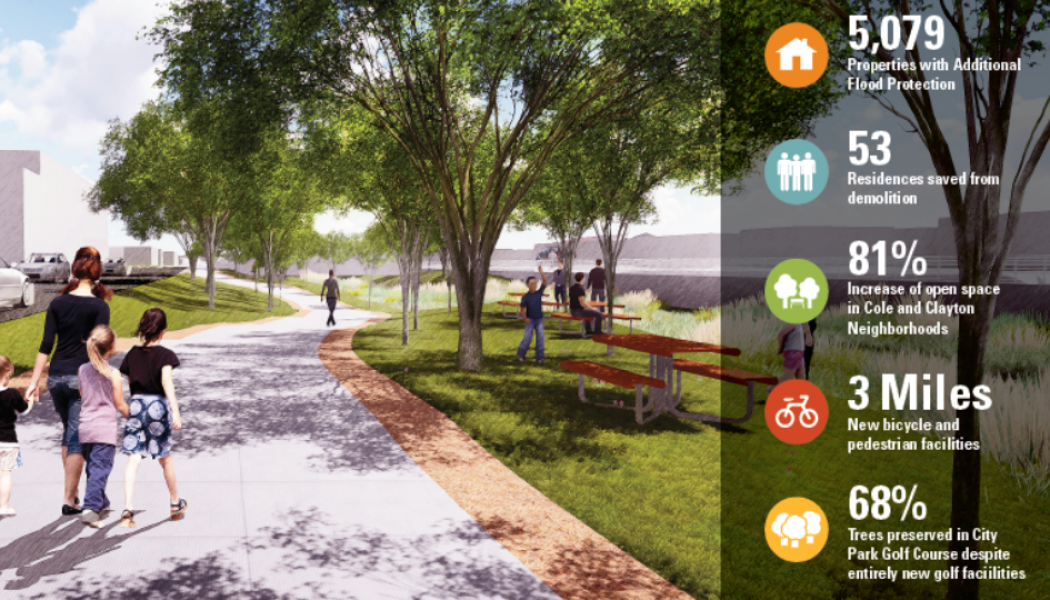Cover Story
Posts to be featured on the Home Page Slider
How to Draw Landscapes (Like a Landscape Architect)
There is a big difference between taking a snapshot with your smartphone or taking time to draw something: the former you will likely forget, and the latter you will remember. Why is that? Drawing forces you to take time and really look at what is in front of you. It is a haptic experience. When you hold a pencil and retrace what you see, you can almost feel the object, its forms and structures. This can especially be experienced when sketching landscapes. Landscape architects deal with landscapes on different scales all the time. But landscapes are also one of the most challenging subjects to draw. That’s why today we’ll share with you some tips and tricks we find helpful for drawing them. As designers or planners, we always use drawing with a certain intention. It is a tool. As with ever...Read More
Show Secrets: Design Details from the 2019 Chelsea Flower Show
You’ve probably seen photos from Chelsea Flower Show. For a week in late May each year, the grounds of the Royal Hospital Chelsea in south London are filled with show gardens and horticultural exhibits. The Chelsea Flower Show is one of the most famous garden festivals in the world. It’s organized by the Royal Horticultural Society, the United Kingdom’s primary horticulture non-profit. The Royals usually open the show. The BBC broadcasts hours of coverage. Celebrities stand and talk to the cameras about their garden love. This year, Dame Judi Dench did a talk about dutch elm disease. Other shows might be more innovative or cosmopolitan, but Chelsea has prestige. I’d been meaning to go for years. This spring, I finally got myself together, took a plane and a subway and a couple of cross-tow...Read More
Updating Denver’s Urban Drainage Systems to Handle the Impacts of Development, Population Growth and Climate Change
Since its founding in 1858, Denver, Colo. has been a city marked by periods of rapid growth and expansion. During once such period in the late 1800s, over three square miles of land to the northeast of downtown was completely urbanized in less than a decade. Unfortunately, in their haste developers failed to recognize the importance of a vital drainageway that collected stormwater from the Montclair and Park Hill drainage basins, a watershed covering over 17 square miles. As the area transitioned from natural rolling plains to a grid of paved streets and rooftops, an insufficient piped stormwater system soon led to floodwaters lapping at the doors of the residents who had settled in the working-class neighborhoods of Cole and Clayton. Reporting on this flooding dates back to the early 1900...Read More
LAF Innovation + Leadership Symposium: Emerging Ideas for the Future of the Profession
At the annual LAF Innovation + Leadership Symposium in Washington, DC, seven emergent voices in landscape architecture shared their ideas that will drive the future of the profession. These seven voices were the 2018-2019 cohort of the LAF Fellowship for Innovation and Leadership. Each of the fellowship recipients engaged in a yearlong journey to develop their leadership capacity and work on ideas that have the potential to create positive and profound change in the profession, the environment, and humanity. LAF established the Fellowship for Innovation and Leadership in 2016 to “foster transformational leadership capacity and support innovations to advance the field of landscape architecture”. This $25,000 fellowship is an opportunity for professionals to dedicate 12 weeks of time over th...Read More
Inform/Engage/Collaborate [Video]
Landscape architects and urban planners are frequently tasked with translating the unique desires of a community into a meaningful public space that seamlessly integrates into the existing community fabric. In order to ensure the long-term success of such a project, sincere and intentional community engagement efforts must be made to understand the community’s needs and incorporate their values. Understanding how to best engage community stakeholders in the design process is critical to ensuring a high level of community investment and pride. During the Land8x8 Lightning Talks in Seattle, Tim Slazinik, landscape architect at GGLO Design, discussed how his firm is looking for ways to engage the public in a deeper, more impactful way. Community engagement strategies take on many different fo...Read More
How One City is Designing for Climate Change
As the City of Boston grapples with climate change and sea level rise, teams comprised of Landscape Architects, Urban Planners, and Engineers have been collaborating to truly understand the scale of the impact, and propose innovative solutions that incorporate natural systems. Recognizing the Challenges of Climate Change Coastal Resilience Solutions for East Boston and Charlestown, a project led by Kleinfelder Engineering and Stoss, was a direct response to recommendations in the Climate Ready Boston report (2016) that the city ‘prioritize and study the feasibility of district-scale flood protection’ and ‘develop local climate resilience plans in vulnerable areas to support district-scale climate adaptation’. The City of Boston chose to address East Boston and Charlestown first because the...Read More
Uniting People Across the Development Transect
In the world of design and planning, one of our biggest challenges lies in the placemaking endeavor — creating a sense of community in a new or unremarkable development lacking notable history or existing bonds among people. How can we create anew an identity, a sense of belonging, and pride of ownership in a setting in which those aspects are nonexistent? These characteristics are cornerstones of a successful development — whether a residential community or the proverbial third place — in contexts spanning the urban to rural transect, and their foundation lies in establishing planning and design principles focused on connectedness, diversity and flexibility. The notion of connectedness includes not only physical connections between people and their environment, but also social and emotion...Read More
Assuming Beauty [Video]
During the Land8x8 Lightning Talks in Seattle, Laura Rose, Principal at the landscape architecture and planning firm Walker Macy, contemplated the role of beauty in design. At a time when landscape architects are leading the discourse on mitigating climate change, fostering community, and enacting social change, it is peculiar for Rose to center her discussion on beauty. While the art of design is still very central to what we do, the work of landscape architects has evolved beyond the romantic ideals of landscape being solely something to look at. Yet, after listening to her presentation, it becomes clear that the term “beauty” describes much more than just aesthetic appeal or artistic whimsy. The Merriam-Webster dictionary defines beauty as “the quality or aggregate of qualit...Read More
A Landscape Approach for Territorial Development
Available for free download, a new book promotes a landscape approach for territorial development in response to today’s environmental challenges and socio-political transformations. “From the South: Global Perspectives on Landscape and Territory” is the first book of the International Landscape Collaborative (ILC), published by Ediciones Universidad del Desarrollo in Santiago, Chile in bilingual form with Spanish translations. The book contains eighteen essays written by authors from eight different nations and five continents that offer a diversity of perspectives on contemporary models of landscape planning, management and design across scales. Rather than viewing the landscape through the lens of a singular discipline, the ILC promotes with the now published volume an inter...Read More
Portfolio Secrets for New Landscape Architects and Designers
A design portfolio, especially for the young and less experienced designer, is an intimidating document to create. We’ve all heard rumors of older students with silver bullet portfolios that secure them endless job offers from prestigious firms. Who doesn’t want to be fought over for employment? The ideal portfolio represents the breadth of your skills and abilities. It demonstrates that you can communicate verbally and visually. It proves that you can think critically. That’s a lot of pressure on one document, which you preferably want to keep to no more than 10-12 spreads (5MB). Design portfolios are useful tools. They demonstrate prospective employees’ aesthetic sensibilities, problem solving skills, communication styles, and technical abilities. But no 12-spread document can fully repr...Read More
Improve Your Drawing Skills: Perspective and Proportions
CAD has been a standard in the profession for decades, planing in virtual reality is around the corner and everyone can take snapshots of views they want to remember with their smartphones. But we want to talk to you about drawing, sketchbooks, and tips for constructing a perspective. Why is that? Let’s make one thing clear: all of the new digital tools bring amazing value to our professional work and we’re not suggesting going back to the drawing boards and rulers. But being able to transfer one’s thoughts from the mind to paper in a quick and confident way can be very beneficial for a number of reasons. First, a quick sketch is still worth a lot as a design tool. The lightness of the free-hand drawing enables us to think with it and explore different variants and possibilities without be...Read More
Anova Grant for Emerging Professionals 2019
Anova Furnishings’ Grant Competition is back again this year, offering emerging professionals the opportunity to attend the 2019 ASLA Conference on Landscape Architecture (formerly known as the ASLA Annual Meeting and EXPO) in San Diego November 15-18, 2019. Centered around a different topic each year, the competition invites participants to submit a short essay and a quick hand sketch, or “napkin sketch”, for the chance to win a $2,000 grant toward conference expenses. A panel of three practicing professionals will select the 13 best responses to be awarded the grant. This year, entrants are asked to share how contemporary landscape architecture could be used to improve an under-performing space in their community. Anova created this grant program to help accelerate individuals’ careers i...Read More

















![Assuming Beauty [Video]](https://land8.com/wp-content/uploads/2019/05/walker-macy-lara-rose-land8x8-1050x600.png)
![Assuming Beauty [Video]](https://land8.com/wp-content/uploads/2019/05/walker-macy-lara-rose-land8x8-80x80.png)







